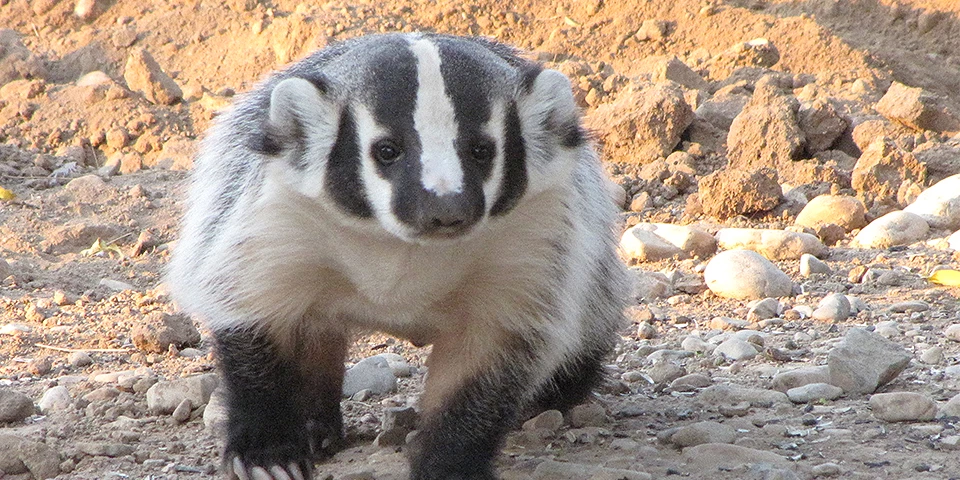
H. Rieser Photo The American badger (Taxidea taxus) is found throughout the western and central U.S. In the Southwest, they are primarily associated with grasslands and desert scrublands. In Mexico, where this species is also found, it is called tlalcoyote or tejón. The badger eats a variety of burrowing animals, but here in White Sands, it has a more restricted diet that consists mainly of southern plains woodrat, kangaroo rats and other small rodents, lizards, carrion, as well as young burrowing owls. Badgers are mostly nocturnal, but in remote places, like White Sands, they can occasionally be observed during the day. This is especially true of females with young, who tend to forage during the day and spend the nights with the young. In the winter, badgers seldom venture above ground unless the temperatures are above freezing. Badgers in this area do not hibernate, but go into a state of torpor (a state of lowered physiological activity typically characterized by reduced metabolism, heart rate, respiration, and body temperature). Because the soil in the park is very compact and hard due to the high level of gypsum, badgers with their strong muscular legs and long front claws are able to dig into the burrows of their prey, and to dig deeper burrows for their own dens. Badger are not common in the park, and thus the ones that are here are even more important for providing homes for many other desert animals. Badger burrows that are abandoned may then be occupied by kit foxes, skunks, desert cottontails, and black-tailed jackrabbits. Abandoned badger burrows also provide ready-made homes for burrowing owls. Badgers are also solitary creatures. They are only found together during the breeding season (late summer – early fall) and when mothers are with their pups (two to three young per litter). Female badgers are unique in that they experience delayed implantation. They delay their pregnancy until winter (December – early February). This is done so that the young are born in a more favorable time of year between March and April. The families usually break up between June and August with the juveniles dispersing to new unoccupied areas, though the females may share their mother’s territory. Badgers are aggressive animals, and have few natural enemies. Dispersing juveniles in this area are probably only attacked and eaten by bobcats (which are also uncommon in the park). The most important threats to their survival include loss of habitat, and shooting and trapping in areas where they are not protected. Badgers typically live 9-10 years in the wild, and may need as much as 2,000 acres of suitable habitat to have enough food and other resources to live and raise a family. |
Last updated: January 20, 2022
